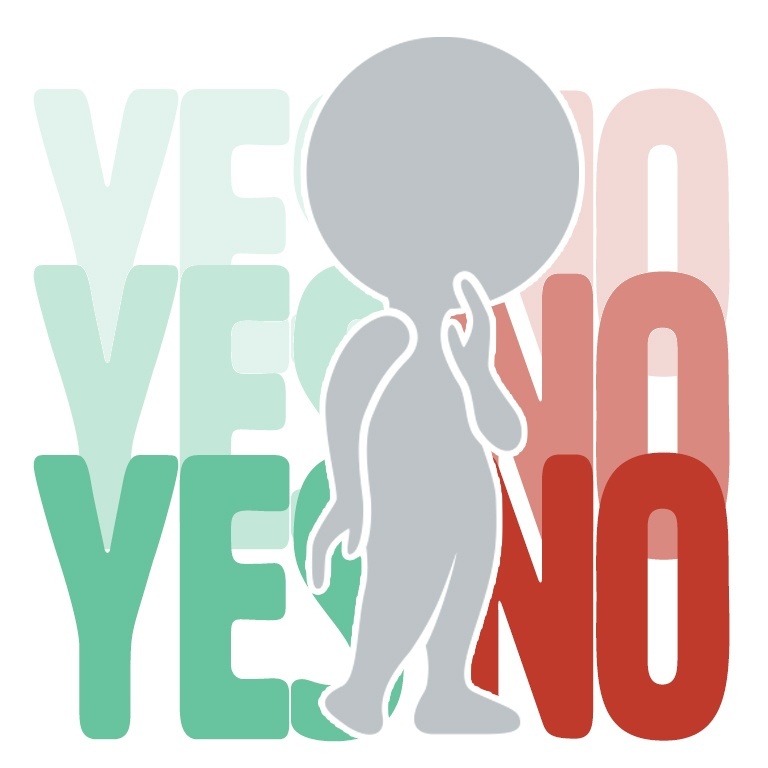Over the past few weeks, there have been a number of odds & ends floating around and it is high time to tie them up…
Don’t Miss
There was a wonderful comment posted a few days ago to the A Tale Of Two Ticket Prices articles. The comment went up several days after the article was initially published so you likely missed it. However, I think the comment is important enough to repost here and is worthy of an entire series of articles (which are likely not far off):
As an orchestra board member and financial geek, I’ve been interested in the issue of earned vs contributed revenue models for symphony orchestras for some time. Subsidizing operating expenses to offset our luxury-item pricing would, in my opinion, increase attendance, and if done effectively, deepen participation in the programs of orchestras.
In questioning how ticket income figures were achieved in a proposed budget by our symphony’s executive, I received adequate explanation. She cited maintaining a stable, consistent ratio of earned vs. contributed income for a budget that had various small increases in cost. She further said the figure is determined so it is realistic, not ambitious; the budget is a guide for annual operations. Sales growth is a goal that will become budget reality if maintained with regularity. The bottom line was that the ticket prices were necessary to fund the orchestra’s budget, and the ratio was the current standard for the industry. But is the entire model at fault when we consider the dwindling number of people who choose to benefit themselves with the symphony? We face an issue of access, and price has to be the number one barrier to access.
At every performance I attend, I stand up at intermission and look at the unfilled seats in the back and the holes of prime seats where people who paid hadn’t shown up or turned in their tickets. I see inventory being spoiled by the second and opportunity that is lost, and I’m sad that so many people missed what I just heard. Our mission is to keep classical music alive in our community. We cost four times more than a night at the movies for two, and the movies are raking in volumes of cash and churning vast profits from it. For young professionals and families with limited spending for leisure activities, a night at the symphony (in the cheap seats!) vs the cost of a bucket of popcorn and sexy special effects is a no brainer.
Many museums provide access to their programs with very modest, if not free admissions. I know that my gift to the local museum helps pay for the art and the overhead. They tell me 70% of my gift goes to programs and 30% to operations. But because of my gift, I get invited to meet the curator, drink free wine at every opening, and get to socialize with friends who also pay to do the same, but after that opening night, my young neighbors can see the art for $2 admission, $7 including the $5 audio tour. My hypothesis is that seat value directly correlates to deeper participation. We know most patrons would pay dearly for the prime aisle seats they’ve owned for generations, and the chance to meet the composers, conductors, soloists and musicians at fancy wine parties, too. We already do! I joined the board to learn more about music and have some social fun. Would I get upset that my young neighbors could get in for only $5? No. I place value on the experience I choose, but I want everyone the hall can hold to hear the music, too.
When we perform free concerts on occasion, we attract mobs of people, many whom have told me they really appreciated the chance to bring their 12-year old child, perhaps a violin student in school, to hear the orchestra play. They don’t have to tell me that the reason they don’t hear it more often is because it’s too expensive.
Is classical music an entertainment that should compete against comparable for-profit entertainment? We get funding on the basis that classical music is high art, a vital artform of humanity that everyone should experience in their lives. Orchestras are the creators and curators of that art in every community where they play.I love my aisle seats and wine and cheese parties, and I’d pay reasonably more for those privileges, especially if some of my money and time helps to open the concert hall doors to more people. I have often wondered why orchestra fundraisers don’t pass a plate after a dynamite concerto, because at that moment of inspiration, I’d shell out more from sheer excitement. The orchestra is a source of community pride and cultural education, and we’re failing to expose enough people to the music because our financial model contains this addiction to ticket revenue. There are people in our community who could write a check to fund the entire season and not miss a dime. Perhaps Baltimore’s coup is a promising first step in the right direction.
Radio Redux
On March 18th, I had a brief radio appearance on the weekend edition of NPR’s Nation with Vivian Goodman reporting. The topic was Cleveland Orchestra’s impact on the local Miami cultural scene. Fortunately, the segment is still available at the NPR website (wait for it, I’m at the end).
Now This Is A Headline That Grabs Your Attention
“BROADCASTING THE MUSIC COMMERCIAL RADIO TRIED TO HIDE FROM YOU” American Music Center caught my attention with the best PR headline I’ve come across in, well, forever. BTW, the PR was announcing their new online radio station, Counterstream Radio at http://www.counterstreamradio..org/. It’s sounds all edgy and in your face, I like it.
Eugene Symphony Musician Returns After Crash
Oboist Kelly Gronli will reportedly return to the Eugene Symphony following the fatal car accident which claimed the lives of two of her colleagues. More on that tragedy here.
Cartoon Caption Contest

 Don’t forget to take a crack at the Adaptistration Cartoon Caption Contest, the deadline is Sunday, 3/25 at 11:59p.m. ET so don’t wait. There have been a number of great submissions so far but you never know, your submission could be the winner! CLICK HERE for details.
Don’t forget to take a crack at the Adaptistration Cartoon Caption Contest, the deadline is Sunday, 3/25 at 11:59p.m. ET so don’t wait. There have been a number of great submissions so far but you never know, your submission could be the winner! CLICK HERE for details.



There is a false assumption in our industry that we are sooooo good for everyone that we should be able to easily raise the funds necessary to produce our product and subsidize low ticket prices. The often unstated part of this equation is a belief that we won’t get a credible audience size if we actually charge a ticket price that equates to our cost basis. In other words, we are not competitive for the discretionary entertainment dollar.
The flip side of this argument, the one used against the arts in the funding environment, is that the earned ratios are so low that we must not be meeting a community need and that the subsidy is only going to lighten the burden of those who do attend and who can afford it.
I appreciate the trustee’s interest in pricing strategies and finding the means to greater engage our audiences in the product. This should be important to all of us. However, I believe that we undervalue the music we produce. The core cost of our service is expensive because it is expensive to put 80 musicians on a stage and pay them a credible wage for that service, and the rehearsal services required to make that experience valuable.
When we find the philanthropic dollar, we should use it to provide programs that expand the outreach to engage customers, we can use it to subsidize the “unsexy” overhead, etc. We should be asking our customers to pay a fair market cost for the services they receive. When we undercharge them, we tell them “it isn’t really worth it.” Others will subsidize some aspects and should be focused on services that would otherwise be unmet, but to fundraise for the core cost of programming starts each institution in a hole that then means it is struggling to reach even rather than expand and develop new opportunities for involvement.
When I initiated a new symphony in our town I raised the net ticket price by 50% and continued to ask subscribers for donations and found that both were met without resistance. Not everyone donates, but over 50% certainly do and the 50% price increase went largely unnoticed by our customers. Yes conditions were different at the time, but the fact was our audiences continue to feel they are getting good value for their money. (An outside polling company checks in with them each year.) Look around town, how much are professional sports tickets selling for? How much are your children paying for concert tickets to hear the latest top band play the local arena? If Broadway fare comes to your town, at what price?
If we don’t value what we produce then we are hard pressed to ask others to see it as a valuable commodity. Start with those most invested, and then find other ways to expand the base.
The stated intentions of your contributor are excellent, but they fail to treat the musicians and our obligations to them as a business obligation. We owe them both a paycheck and respect for the art that they deliver. In our society part of respect is measured in dollars. It is too bad, but when we are chastened to “run it like a business” (a phrase I hate) this is part of the equation. Look at some aspect of your ROI (Return on Investment) and make that credible. Stop selling a valuable commodity for rates that have no connection to its cost, i.e. to its commercial value.
The comparison to arena rock shows is inaccurate. Those concerts take place infrequently and give people a chance to plan ahead to absorb the financial costs of them. It is slightly more accurate to compare orchestra concerts to sports events, which happen with roughly the same level of regularity. Baseball games many days of the season, orchestra concerts every week. But even then, I’m not sure that sports fans attend with the same regularity that orchestra subscribers do. Do they?
It is fascinating to see the different aspects Andrew and Marc took away from the (professed) board member’s comments.
I do agree with Marc’s impressions that the comparison to rock concerts isn’t the best analogy to use due to the imbalance in the number of annual offerings from each presenter. But I do like the comparisons to museums and I would add zoological societies (zoos) to that line of reasoning.
However, unless I’m interpreting Andrew’s comment incorrectly, I don’t think that, on the whole, this business undercharges for its product. How can anyone look at 70% or lower average attendance figures and say that lower ticket prices would undervalue the product? To me, this demonstrates a clear disconnect between current average prices and what the potential audience is willing to pay.
Furthermore, there’s a dynamic component here which takes into account the value in reaching a maximum capacity audience compared to the value in escalating ticket prices at the sake of reasonable attendance figures. The moment you turn people away on a concert to concert basis because of 100% capacity is the only time when you should consider raising average ticket prices to the overall level seen in this business. Furthermore, when you have regular access to 30% or more patrons that you currently do, it makes it that much easier to spread your message and connect with a broader segment of the community, i.e. establish a quantifiable source to base your value and impact . And after all, isn’t that at the heart of many orchestra missions today?
This is a great topic and I’m pleased to say that there will be some really fantastic offerings here at Adaptistration in the very near future which touches on this subject in even more detail during the 2007 Take A Friend To Orchestra program. Stay tuned…
I have been troubled in recent years that while everyone talks about making orchestras more accessible, ticket prices have continued an inexorable climb, helped along by a move toward smaller halls that while aesthetically more pleasing, require higher ticket prices to generate the necessary revenue.
The rock concert comparison seems incorrect, given how infrequently people attend such shows relative to the frequency we hope people would go hear an orchestra. The museum analogy seems preferable, although people don’t generally go to museums all that frequently, either. Not long ago I read an analysis (maybe on ArtsJournal) suggesting that admission fees at most major museums cover such a small part of their budgets that those museums might do well to consider dropping admission fees – save on administration costs and improve their access all that much more.
Even though I understand the economics, I feel that orchestra ticket prices are too high, certainly if you want to encourage people to attend frequently. Nobody loves orchestras more than I do, but there are very few concerts I would find worth paying $50 or more to hear. The increase in ticket sales in Baltimore may suggest others feel the same way, though it’s possible that if Baltimore were to continue the practice a few more years, people would start to undervalue the symphony and the novelty would wear off.
The fundamental problem, of course, is that a hall seating 2,000 can’t generate enough revenue to pay professional-level salaries to the 100 musicians on the stage – not at prices that will sell tickets, anyway. This would change if orchestras could sell out the same program 10 times instead of 2-4 times, thereby amortizing rehearsal expenses and some fixed costs. Sadly, no orchestra is that popular.
It would be great if orchestras could build their endowments to subsidize ticket prices, like Baltimore will be doing next year. And here’s the heresy/ingratitude: Are we expecting too little of orchestra boards, at least those running the very top-tier orchestras in the country’s richest cities? You figure that a board in LA, Chicago, New York, San Francisco or Seattle is comprised largely of people who have (or have access to) so much money that any orchestra’s budget is basically a rounding error in the financial circles where they move. Understanding that there are real charities deserving of support, shouldn’t it nonetheless be possible for board members at these big institutions to raise enough endowment money to reduce reliance on ticket revenues?
I’m addressing a piece of the rock concert / orchestra concert comparison in my TAFTO contribution (shameless plug, I know) and I think the key issue is close to what Marc said. It’s not so much that rock concerts take place infrequently (I haven’t done a survey, but I bet you’d find that your favorite regional big rock concert arena has a show booked about as often as your local symphony hall does) as that the shows that appeal to a given constituent occur infrequently. The orchestra model assumes a small constituency that comes to many concerts whereas the rock model assumes a large constituency that comes to one or two concerts a year, or less. The rock concerts are marketed in a targeted fashion as major can’t-miss events to the element of their constituency that is likely to see the concert that way, whereas the orchestra markets to most of their constituency all of the time. The rock audience is getting most of its music at cheaper events and through TV and recordings for most of the year, so a lower socioeconomic class (and thus a larger number of people) fit into the rock concert business model. The orchestra doesn’t have can’t-miss events (from most people’s perspective) and so relies on its constituency to be wealthy enough to be able to attend regularly, which makes for a smaller audience overall.
I’ve got some thoughts on the sporting event comparison, but they’re too half-baked to go into right now.
The baseball comparison occurs to me quite often, as well. However, it should be noted that none of the major professional sports leagues rely on ticket sales alone, either. If they did, player salaries in that industry would have to be much lower. TV revenue, especially, subsidizes the high salaries of baseball players (with smaller markets taking advantage of revenue sharing – how would that look in our industry?).
It wasn’t all that long ago that baseball players were making less than $100k per year. It wasn’t until TV became the medium by which most people began to watch the games that salaries really began to go up.
So, how about the Orchestra Network on satellite or cable? Of course you’d need Orchestra Network2 “Il Due” for less popular pieces…
Good thoughts Sam, I would add that Satellite radio now has the MET featured on all-opera channels so perhaps orchestras aren’t far behind.
Nevertheless, the basic concept of subsidies (whether they originate from television advertisements or endowments) is essentially the same perspective and something worth continued exploration.